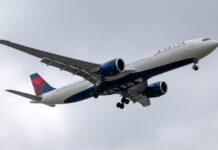Tesla Revolutionizes Autopilot Technology in China: Decoding the Naming Conundrum
In a groundbreaking move that has the automotive world buzzing with excitement and curiosity, Tesla has unveiled a new and improved version of its advanced driver assistance system in China. Known as Autopilot automatic assisted driving (AAD), this cutting-edge technology represents a significant leap forward in Tesla’s quest to redefine the future of transportation.
For those unfamiliar with Tesla’s Autopilot system, it’s essential to clarify that this is not a self-driving feature. In fact, Tesla’s Autopilot falls under the SAE Level 2 category, which necessitates the driver’s constant attention and readiness to take control at any moment. Despite its name, Full Self-Driving (FSD) does not imply complete autonomy, emphasizing the critical role of human supervision in the driving process.
The recent introduction of AAD in China marks a significant milestone for Tesla, as it represents the first time the company has rolled out a technology akin to FSD in the region. However, what sets this system apart is its unique nomenclature: “Autopilot automatic assisted driving on urban roads.” This distinctive name reflects a more accurate depiction of the system’s capabilities, steering away from the grandiose promises associated with FSD and emphasizing its role as an advanced driving aid.
According to Tesla’s official update notes in China, AAD enables vehicles to navigate controlled roads and urban streets with enhanced precision and efficiency. This innovative system guides vehicles through ramp entrances and exits, identifies traffic lights at intersections, and seamlessly changes lanes based on speed and route. The integration of AAD marks a significant upgrade from Tesla’s previous technologies in China, offering drivers a more comprehensive and sophisticated driving experience.
Despite these advancements, AAD falls short of achieving the level of autonomy associated with FSD due to data-related challenges. Tesla has faced regulatory hurdles in accumulating training data in China, compelling its engineers to explore alternative methods, such as utilizing online videos for training purposes. This limitation has placed Tesla at a disadvantage compared to domestic automakers in the region who have made significant strides in autonomous driving technology.
One notable comparison drawn by Reuters is between AAD and Chinese EV manufacturer BYD’s God’s Eye system, characterized as a “mid-tier version” of autonomous driving technology. While Tesla’s collaboration with Baidu for mapping data access shows promise for future advancements, the timeline for achieving parity with competitors remains uncertain.
The decision to brand the advanced driving system in China as AAD rather than FSD raises intriguing questions about Tesla’s marketing strategies and regulatory considerations. The company’s rebranding of FSD (Beta) to FSD (Supervised) last year in response to legal challenges underscores the complexity of aligning product naming with technological capabilities. The discrepancy between marketing monikers and operational realities reflects the evolving landscape of autonomous driving technology and the need for transparent communication with consumers.
In conclusion, Tesla’s unveiling of Autopilot automatic assisted driving in China represents a significant milestone in the company’s pursuit of cutting-edge automotive technology. By offering drivers an enhanced driving experience while emphasizing the importance of human oversight, Tesla continues to push the boundaries of innovation in the automotive industry. As the global automotive landscape evolves, Tesla’s commitment to safety, efficiency, and technological advancement sets a new standard for the future of transportation.
For more updates and insights on the latest automotive news, be sure to subscribe to The Drive Daily for all the latest developments in the world of cars and technology.










